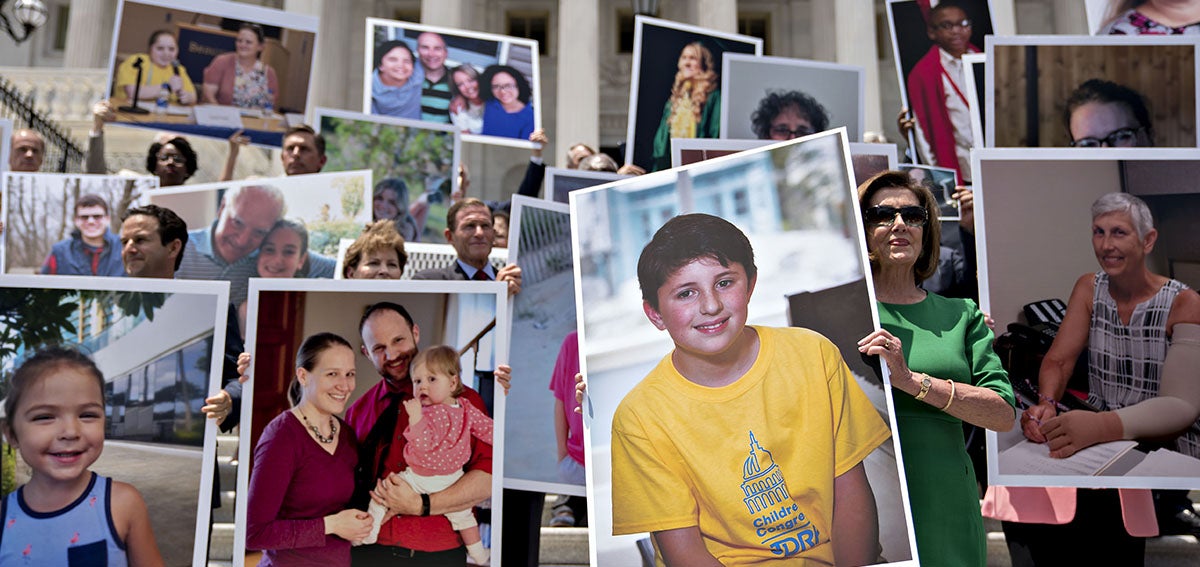
On this day 10 years ago, President Barack Obama signed the Affordable Care Act (ACA) into law. Since then, the ACA has been folded into American life in myriad ways, reducing the number of people who are uninsured to historically low levels.
The health care law has protected people with preexisting health conditions, reduced racial disparities in coverage, and improved maternal and infant health — all while surviving multiple attempts to repeal and replace it.
To celebrate the ACA’s 10th anniversary, let’s take a look at some of its accomplishments and why they’re so important in the face of a pending Supreme Court case shadowed by the COVID-19 pandemic.
Huge Coverage Gains
More than 20 million people have gained health coverage thanks to ACA policies that shored up the individual market and expanded Medicaid. According to the Center on Budget and Policy Priorities (CBPP), “about half of the increase reflects gains in private coverage, due to ACA policies such as subsidies for individual market coverage, reforms to the individual insurance market, letting young adults stay on their parents’ plans, and the individual mandate requiring most people to have coverage or pay a penalty.” The other half comes from expanded eligibility for enrollment in Medicaid.
Researchers from the University of Michigan analyzed coverage data from the Census Bureau’s American Community Survey and found that insurance coverage has increased for all racial and ethnic groups under the ACA. Racial disparities in health insurance coverage, which are known to contribute to reduced access to care and worse health outcomes, have decreased, the researchers reported in Health Affairs. Nonetheless, Black people and Latinos nationwide remain less likely than white people to be insured.
Before the ACA was implemented, health insurers could deny coverage or charge higher premiums to people with preexisting conditions. Today, about 133 million nonelderly Americans (PDF) with preexisting conditions — which include common problems like high blood pressure, behavioral health issues, and even pregnancy — are protected from discrimination based on health status and medical history.
The Golden State — A Leader in Implementation
California embraced the ACA from the start, when Governor Arnold Schwarzenegger was in his second term. Deborah Kelch, former executive director of the Insure the Uninsured Project, was a state legislative staffer during California’s implementation of the ACA. “There was a lot of desire and effort in the Schwarzenegger administration and the legislature to do something like the ACA,” she told Michael Hiltzik in the Los Angeles Times. “So when the ACA came, we were particularly well situated to take advantage of it and go forward.”
Thanks to the state’s efforts, the “share of Californians with no health insurance dropped nearly 10 percentage points, hitting a historic low of 7.3% in 2016,” the Public Policy Institute of California reported. California Health Interview Survey data show that there is no longer a statistically significant difference in the uninsured rates of white, Black, and Asian / Pacific Islander Californians. However, Latinos continue to experience a higher uninsured rate than other racial and ethnic groups.
Better Coverage Means Better Care
A growing body of evidence suggests that the coverage gains made under the ACA have resulted in better access to care for people who are insured. Between 2010 and 2018, the share of adults age 19 to 64 who skipped a test or treatment fell 24%, and the share of those who didn’t visit a provider when needing care decreased 19%, according to CBPP.
A KFF literature review of more than 400 studies found that “most research demonstrates that [the ACA’s] Medicaid expansion has improved access to care, utilization of services, the affordability of care, and financial security among the low-income population.”
Other studies found a positive association between increased insurance coverage under the ACA and the likelihood of getting preventive care (e.g., blood pressure checked), early-stage cancer diagnosis, and treatment for substance use disorder.
And let’s not forget the National Bureau of Economic Research study that found “substantially reduced mortality rates” among older adults with low incomes in the states that expanded Medicaid. “Death rates dropped in the states that expanded Medicaid, saving 19,200 lives over four years,” Annie Lowrey reported in the Atlantic. “Had all 50 states expanded the program, 15,600 further deaths would have been averted.”
Gains Need to Be Protected
In a recent video released by the health care advocacy group Protect Our Care, former president Obama marked the ACA’s 10th anniversary by highlighting some of its greatest successes, saying, “That’s something worth celebrating, but it’s also progress worth protecting.”
This progress is all the more precious amid the coronavirus outbreak, which is mercilessly exposing the weaknesses in the US health care system and raising the importance of getting to universal coverage. As CHCF president and CEO Sandra R. Hernández, MD, wrote in a commentary published in CalMatters, “COVID-19 has no party, no race and no citizenship. Health care is a basic need, as is our core public health infrastructure and the need for paid leave when workers get sick. . . . When some people are left out of the health system, all of us face a greater risk.”
This ACA milestone holds special significance as the Supreme Court prepares to hear oral arguments in the fall in a lawsuit challenging the landmark law. California has taken many steps to defend against political actions to repeal and replace the ACA, but this lawsuit is a “dark cloud,” according to Hiltzik, who pointed out that “an adverse ruling by the Supreme Court would eliminate funding for the Medicaid expansion and premium subsidies.”
California “could never counter taking away that money,” Peter Lee, executive director of Covered California told Hiltzik. “Medicaid expansion and premium subsidies would go away, as would protection for preexisting conditions, as would tens of billions of dollars for preventive health and public health, which is relevant to the current virus.”
Have you downloaded CHCF’s data cards documenting the ACA’s success in California? Email me.
Authors & Contributors




